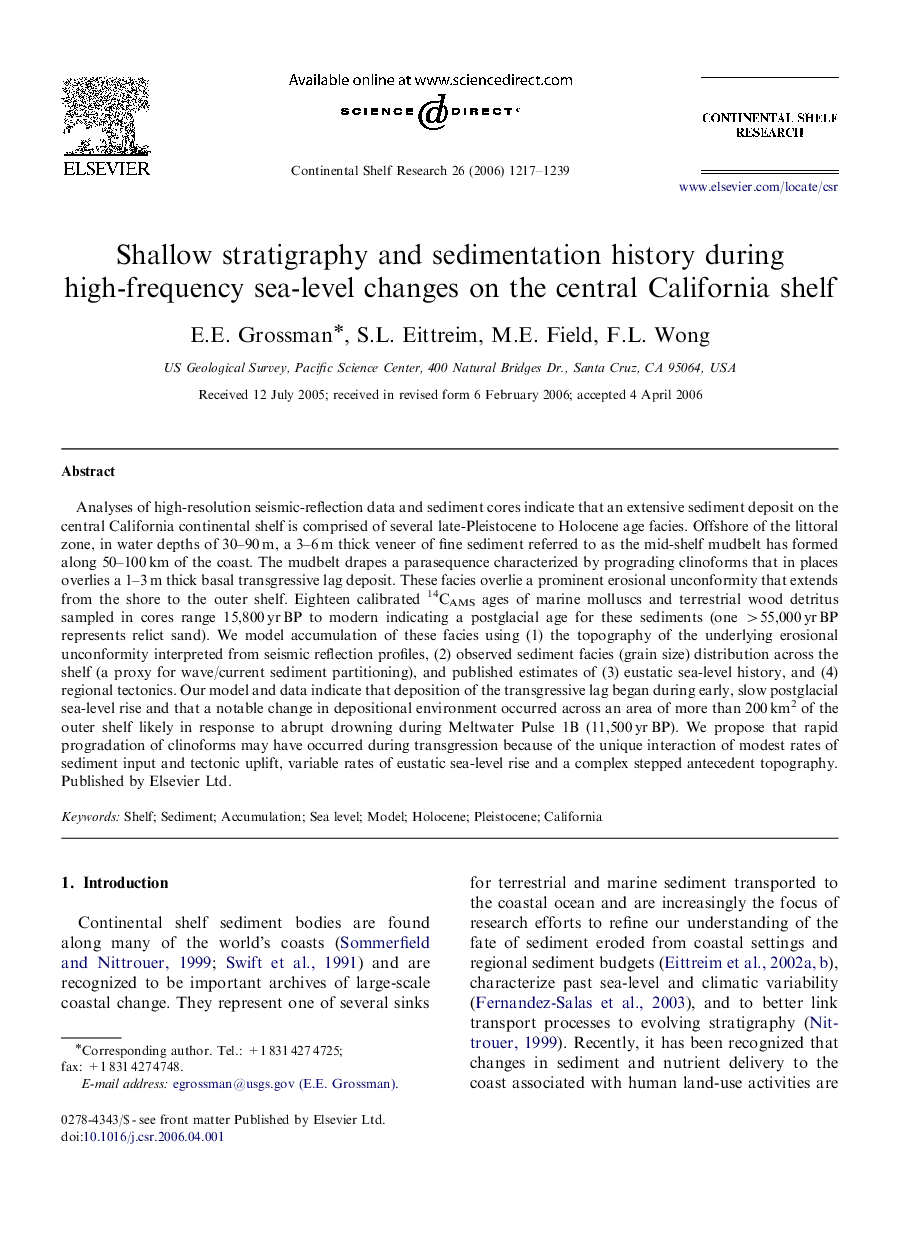| کد مقاله | کد نشریه | سال انتشار | مقاله انگلیسی | نسخه تمام متن |
|---|---|---|---|---|
| 4534024 | 1325242 | 2006 | 23 صفحه PDF | دانلود رایگان |

Analyses of high-resolution seismic-reflection data and sediment cores indicate that an extensive sediment deposit on the central California continental shelf is comprised of several late-Pleistocene to Holocene age facies. Offshore of the littoral zone, in water depths of 30–90 m, a 3–6 m thick veneer of fine sediment referred to as the mid-shelf mudbelt has formed along 50–100 km of the coast. The mudbelt drapes a parasequence characterized by prograding clinoforms that in places overlies a 1–3 m thick basal transgressive lag deposit. These facies overlie a prominent erosional unconformity that extends from the shore to the outer shelf. Eighteen calibrated 14CAMS ages of marine molluscs and terrestrial wood detritus sampled in cores range 15,800 yr BP to modern indicating a postglacial age for these sediments (one >55,000 yr BP represents relict sand). We model accumulation of these facies using (1) the topography of the underlying erosional unconformity interpreted from seismic reflection profiles, (2) observed sediment facies (grain size) distribution across the shelf (a proxy for wave/current sediment partitioning), and published estimates of (3) eustatic sea-level history, and (4) regional tectonics. Our model and data indicate that deposition of the transgressive lag began during early, slow postglacial sea-level rise and that a notable change in depositional environment occurred across an area of more than 200 km2 of the outer shelf likely in response to abrupt drowning during Meltwater Pulse 1B (11,500 yr BP). We propose that rapid progradation of clinoforms may have occurred during transgression because of the unique interaction of modest rates of sediment input and tectonic uplift, variable rates of eustatic sea-level rise and a complex stepped antecedent topography.
Journal: Continental Shelf Research - Volume 26, Issue 10, July 2006, Pages 1217–1239